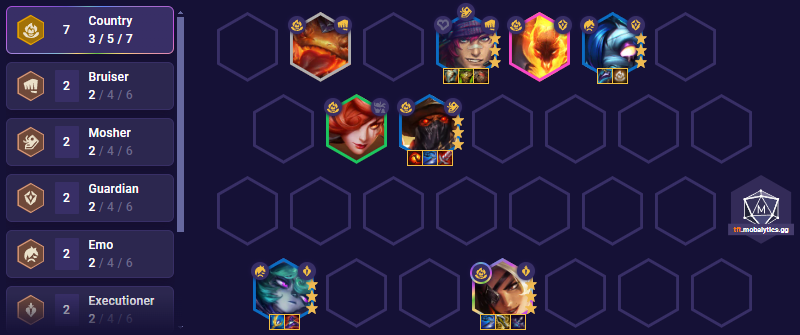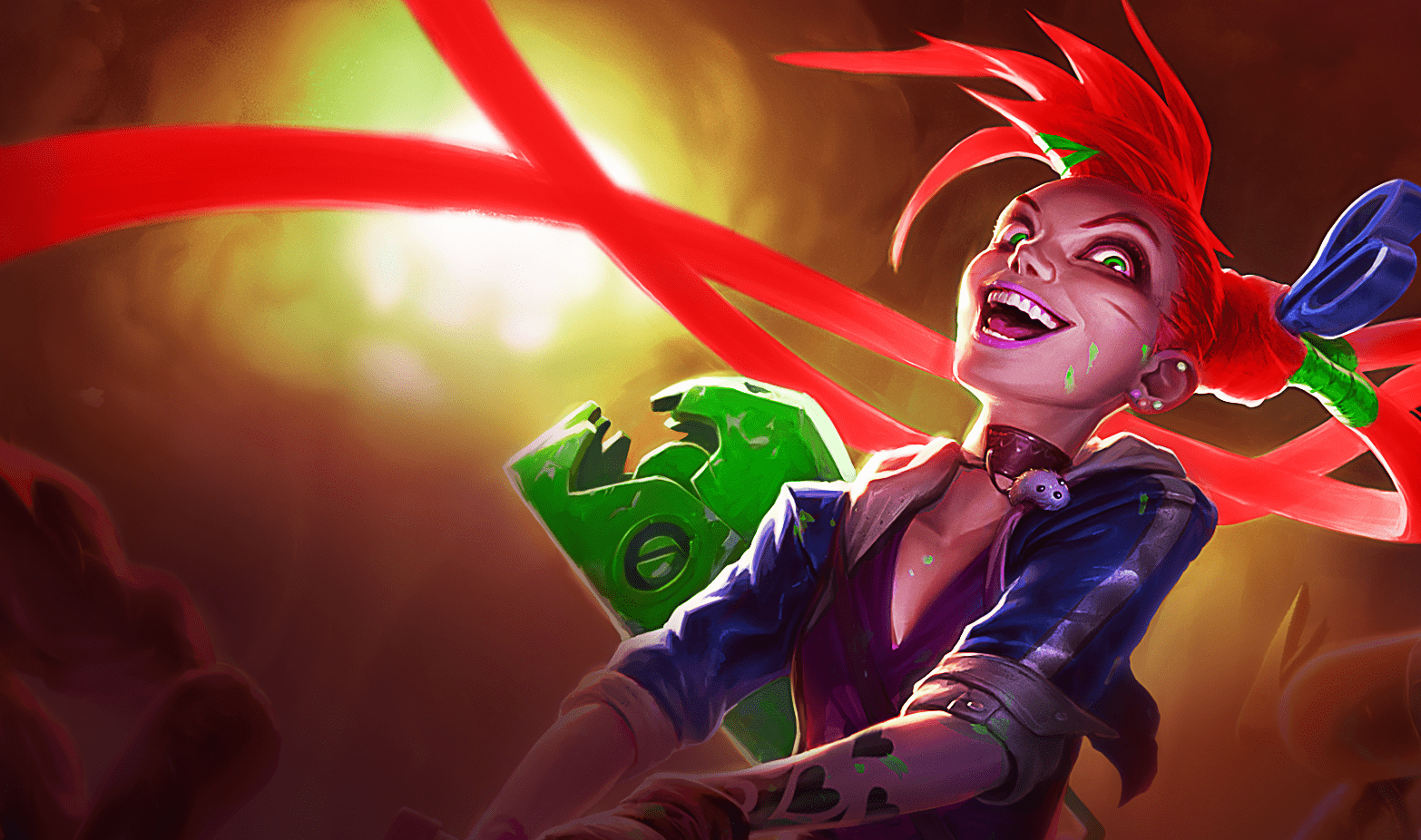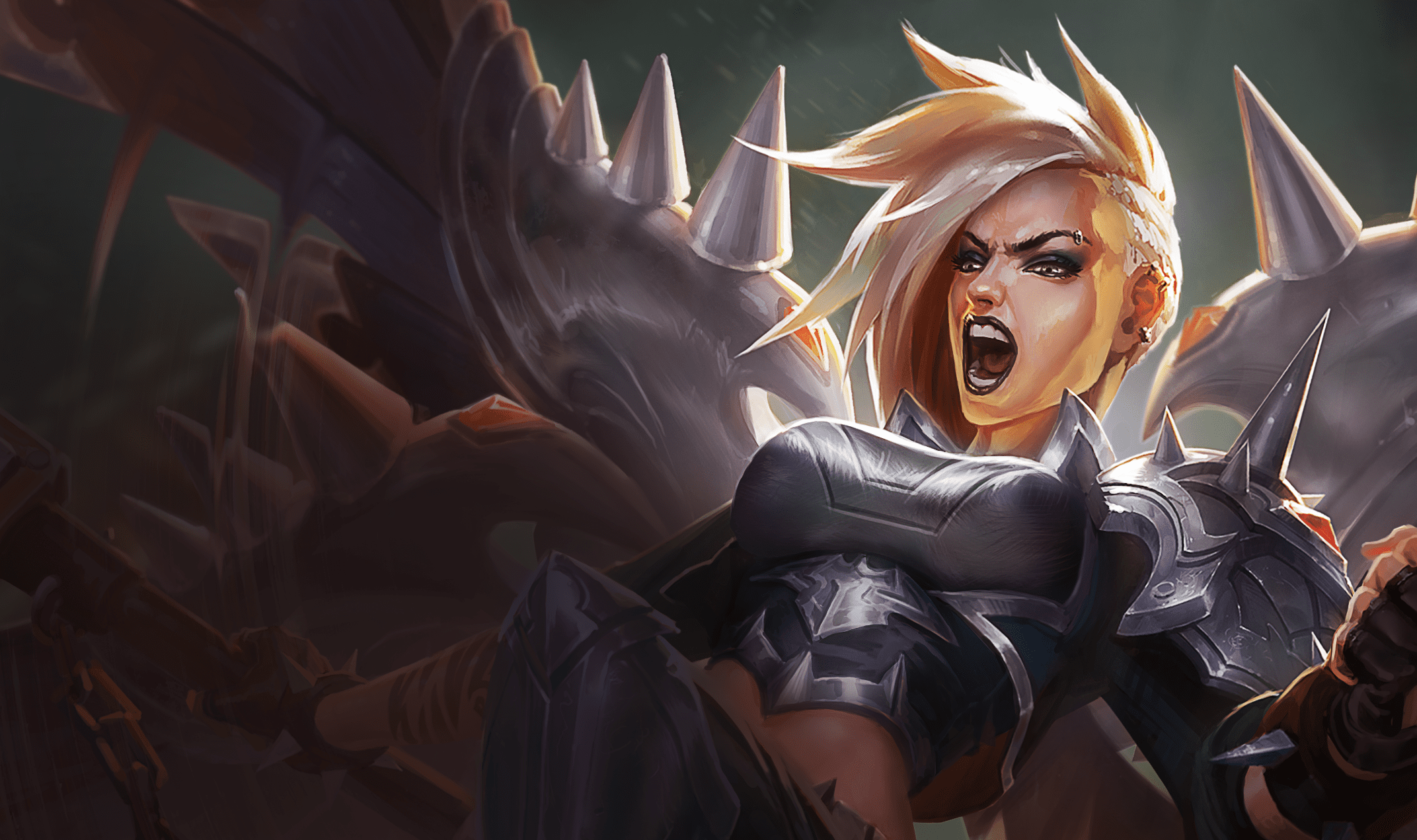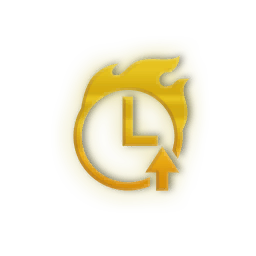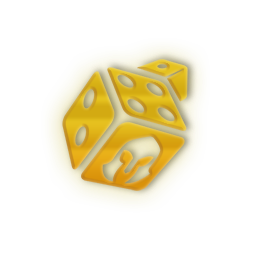TFT: How to Level and Play Reroll Team Comps
Welcome to our in depth guide on how to play reroll comps in TFT. Reroll comps are also called things like Hyper Roll or Slow Roll, but overall, they’re simply comps that look to 3-star a particular unit. I’ve covered the basics on Leveling Strategies in another guide, but I’ll be going more in depth for this article.
Reroll comps have been around since the beginning of TFT, with things like Donkey Rolling (literally rolling to 0 every turn) actually being a legit strategy back then.
While reroll comps have evolved to mix a variety of strategies, the main game plan still remains the same. I’ll be going over the basics of this strategy as well as some tips to improve your gameplay and climb.
What is a Reroll Comp
As the name suggests, reroll comps are ones that focus on spending gold a lot to upgrade a specific unit(s) to 3-star. This often results in you being lower level than other players who are not also rerolling.
Once you’re able to hit a 3-star unit or a few, you’ll be able to hit a power spike for your comp. This ideally results in you being stronger than the rest of the lobby, allowing you rebuild your economy safely to catch up in levels.
At this point, your 3-star carry should be able to compete with other team comps with higher cost carries.
Before moving on further, lets quickly define Hyper Roll and Slow Roll:
- Hyper Roll: The act of spending a lot of gold (usually down to 20ish) to hit a 3-star unit. You can roll down to 0 but it’s generally not advised.
- Slow Roll: The process of rolling gold little by little while staying above 50 to maximize interest. This process is slower but can reduce the variance of Hyper Rolling and not hitting your 3-star upgrade.
Reroll comps can utilize one of these strategies or a mixture depending on the game state.
TFT Power Spike Stages
I touch on this topic in the General Leveling Guide, but it’s good to reiterate this concept. In TFT, there are Stages in the game that naturally lead to power spikes for your team comp. These Stages are:
- Stage 3-2 (Second Augment)
- Stage 4-1/4-2 (Last Augment)
Note: Some players may opt to power spike at 4-2 to gain some extra gold and see what their last augment is. Others will do so at 4-1 in order to pick up contested units or continue a win streak. - Stage 5-1 (End Game)
Many of these Stages are shortly after a PvE round where players will get additional loot like Gold, Items, and more. The first two power spikes, 3-2 and 4-2, are also the Stages where you get to pick an Augment, further increasing your team’s power.
Power spikes are important because these are the rounds you should be assessing what you should do. If your team is currently weaker than others, it can be a good idea to spend some gold to roll for units.
Conversely, if you’re feeling strong or hitting upgrades naturally, these Stages can be a time to hold back and let your economy build even further.
There are other Stages that could be considered power spikes, like 3-4, 4-4, and 5-4. These Stages are Carousel rounds, and you can use this moment to assess your current position as well. You generally want to focus more on early Stages after PvE rounds, but sometimes leveling or rolling after a Carousel can be good.
This framework is important to keep in mind as you’re playing reroll comps. Every game will be different, and adjusting your decisions based on your current state in the game is important to mastering TFT.
1-Cost Reroll Comps
To start things off, I’ll be splitting these sections by the cost of the main carry. Let’s begin with 1-cost reroll comps.
Game Plan:
Comps with 1-cost carries usually fall into two camps:
- Focus on one 1-cost unit to carry through the early game and reach the late game to fill out the comp with higher cost units.
- Generally, you want to find multiple copies early to be able to 3-star quickly and cheaply. This will let you power spike efficiently, allowing you to rebuild your economy faster.
- Having good items to build on your carry early can also help you reach a power spike early.
- You will try to catch up in levels faster to match the lobby and add in high cost units.
- Look to reroll for multiple low cost units to assemble a team of strong 3-star units.
- These comps center around 3-starring multiple units instead of just 1. There can still be a main carry or priority to 3-star, but having multiple will lead to better success.
- You can spend a majority of the game under leveled and use your 3-star units to carry fights.
- These team comps are generally easier to play as the game plan is much more simple and linear.
Whether or not a comp falls into gameplan 1 or 2 depends on the champion and context. Some units like Jinx, Vi, Twitch, and Pantheon are all low cost Punk units that synergize together in reroll comps.
Other times, you may have a champion like Yasuo who doesn’t need additional 3-stars to help him out. Instead, you can use him to power spike early and level up while win streaking to add in higher cost units.
Stage Breakdown
Here’s a general breakdown of each Stage and what to do for each one.
Stage 2
For 1-cost reroll comps, you definitely do not want to level up in Stage 2. This will lower your odds of hitting 1-cost units and is counterproductive.
For all of Stage 2, the priority is to build up as much gold as possible. Use cheap 1-cost units to save HP on your board while hitting interest thresholds (10, 20, 30, etc).
Lastly, it’s generally advised to try and lose streak for Stage 2. Since you won’t be leveling up, it’s unlikely that you will be able to win streak, so being able to lose streak is better. You don’t want to fall to 60 HP to lose streak, simply keep it in mind to help generate some more Gold.
Stage 3
At 3-1, most players will opt to Hyper Roll down to 20 or so gold to try and hit a 3-star 1-cost unit. This is because 3-1 is the last Stage you will be level 4, with better odds of hitting a 1-cost unit.
At 3-2, you will naturally hit level 5, and you can let your 3-star carry win you fights as you build your gold back up. No need to hit level 6 at this point (which is the standard for regular comps).
- If you have a solo reroll carry, look to catch back up in levels to start playing “normally.” You can look to level up to 6 at 3-5 (after carousel) and hopefully hit level 7 in early Stage 4.
- If you’re rerolling for multiple units, you can look to rebuild your economy back up to 50 and begin Slow Rolling for additional upgrades.
Stage 4
4-1/4-2 will be the main power spike for the lobby, and your comp should try and match that tempo. For solo reroll carry comps, you should already be past rerolling and focusing on catching up to 7 and adding in stronger units.
For comps with multiple reroll targets, 4-1 is your last stand to hit your 3-star units. At minimum, you should be level 6 at this point and have multiple 3-star units. If you’re unlucky and still behind, you can choose to roll down for upgrades while saving enough gold to hit level 6.
Conversely, if you already hit your upgrades, you can simply look to catch up in levels.
This part is very dependent on context. If your team is still weak, you need to improve it somehow either by rolling for upgrades or leveling up to add more units.
Stage 5
At 5-1, you should ideally be caught up to everyone else in the lobby and be ready to reach level 8. This should allow you to put together your final team comp with 8 units. You may be missing an upgrade here or there, but this is the point to roll down and put it all together.
If you’re having a good game and complete your comp with extra gold, you can start saving back up to potentially reach level 9 or look for other 3-star units.
Stage 6
At this point, you should either be rolling down to find any upgrade you can, or leveling up to 9 to add in another strong unit.
2-Cost Reroll Comps
Moving onto 2-cost reroll comps, a majority of the game plan from 1-costs carries over. The main difference is that Level 6 provides the highest odds of hitting 2-cost champions in the shop.
Game Plan:
Similar to 1-cost reroll comps, 2-cost rerolls can also fall into the categories:
- One main 3-star carry
- Multiple 3-star units
Whether or not a comp falls into group 1 or 2 depends on the champion and set. You’ll be able to see what champions are necessary to 3-star in the Tier List.
Stage Breakdown
Overall, the stage breakdown for 2-costs is quite similar to 1-costs, just with a larger emphasis on level 6.
Stage 2
Like all reroll comps, you will want to focus on making Gold in Stage 2. However, since you don’t need to stay at level 4, you have an option of lose streaking or leveling to win streak.
Regardless of what happens, you simply want to gain as much gold as efficiently as possible. If you find some early upgrades, you can level up to try and win streak. If your early luck is bad, simply hold back and build up your gold instead.
Stage 3
Stage 3 is arguably the most important Stage for 2-cost reroll comps. In general, comps will want to hit level 6 on 3-2.
If you want to play aggressively, level up to 6 and roll until you’re able to 2-star most of the units on your board (including your main carry). This can be good if you’re behind and want to stabilize to lower the risk of going 8th.
Conversely, if you want to play more greedily, you can opt to wait until 3-5 to level up to 6 and slow roll for your 3-star upgrades. This can be a good option if you are ahead on life and want to trade some HP for more gold.
As Stage 3 progresses, simply slow roll in order to find your 2-cost carry. You can also decide to pivot to a 2-cost reroll comp if you find many natural copies during Stage 2-3. This is flexible since you can keep up in levels and play a “normal” game up until Stage 3-2.
Stage 4
Stage 4 is where you spend a majority of the time slow rolling. Other players will level up to 7 at 4-1, but you’ll spend this time losing fights to find your 3-star carry.
Ideally, you will be able to hit your 3-star upgrade during Stage 4. Once you do so, you can start to slow level (same as slow rolling but spending gold on leveling up) to catch back up in levels.
If you’re unlucky or didn’t build up enough Gold, you will need to roll down aggressively at the start of Stage 5.
Stage 5
Assuming you’re unlucky, 5-1 is the point where you should at least have your 3-star carry and be Level 7. You should roll down aggressively at this point or you might lose too much HP.
If your carry has strong items and your other units are mostly 2-star, you should be able to compete with other team comps that are level 8.
Once you have your 3-star carry, you can then decide to either save up for level 8, or roll for other upgrades if you’re still weak.
Stage 6
If you make it this far, you should be able to hit level 8 unless you’ve been rolling every round for upgrades. Stage 6 is more of the same. Simply level up if you can and keep rolling for upgrades to try and place as high as possible.
3-Cost Reroll Comps
Lastly, let’s cover the general game plan for 3-Cost reroll comps. 3-Cost carries are sometimes the hardest comps to play. The highest odds for 3-cost units are at level 7 and 8, but it’s difficult to lose rounds later in the game to reroll.
Game Plan:
Once again, 3-cost carries either have multiple carries or have one main carry. However, unlike the previous two sections, this difference changes your game plan quite significantly.
Multiple 3-Star Carries
For a comp like Country, there are multiple units you want to 3 star. This happens if a team comp is able to have multiple 3-cost units that synergize together. This way, you’re able to slow roll at level 7 for multiple units, allowing you to have a big power spike if you hit multiple 3-stars.
For these comps, the game plan is very similar to 1 and 2-costs, the only difference being you slow roll at level 7. Comps with many 3-star units can rival level 8 team comps the whole game if you’re able to hit. Level 8 is simply a nice way to fit in an extra trait or strong unit.
One 3-Star Carry
On the other hand, we have team comps that only rely on hitting one 3-Star carry. For these comps, you can either slow roll at level 7 or simply hit level 8. If you have multiple copies early, slow rolling can be a strong way to hit an early 3-star unit without losing too much tempo.
If you don’t have many copies, you can simply look to level up to 8. This is because you can still add in strong 4 or 5-cost units as secondary carries. As you build up more gold, you can still look for your 3-star carry.
Both strategies have their own risk, so once again, you should determine the best course of action based on your game.
- Many copies (~6) -> Slow Roll to hit a quick power spike and catch up to 8 later
- Less copies (~4) -> Level up to 8 for a guaranteed power spike and keep looking
Stage Breakdown
I’ll only briefly cover the breakdown since it mirrors the 1 and 2-costs quite a bit.
Stage 2 and 3
3-Cost carries aren’t found until later in the game, so you can simply play out Stage 2 and 3 however you see fit. Win streak early or lose streak if you don’t find natural upgrades.
The only difference comes at Stage 3-2. As usual, you will want hit level 6 at 3-2. However, you’re also able to roll aggressively at 3-2 in order to 2-star your 3-cost carry.
Hitting a 2-star 3-cost unit this early can usually result in a win streak all the way to the end of Stage 3. This can be a strong play if you already have 2 copies of a 3-star unit.
This can set up your economy going into Stage 4 very well.
Stage 4
At Stage 4-1, you’ll want to hit level 7 along with most other players in the lobby. If you want some extra gold, you can wait until 4-2 to level up. If you have a win streak, though, you’ll want to level at 4-1 to try and keep it.
Depending on your situation, you can opt to slow roll at level 7 or look to save up for level 8.
Stage 5
If you’re committed to rerolling for 3-star units, this is where you should roll down for your upgrades. If you saved up for level 8 and didn’t find more copies naturally, level up to 8 and roll for upgrades.
Stage 5 is where you should look to make the strongest team comp possible, whether that’s through rerolling or leveling up to 8. Ideally, you’ll find your 3-star upgrades and be able to hit level 8, but not every game is so fortunate.
If you make it to Stage 6, simply reassess whether saving up to level 8/9 or rolling for upgrades is better.
Additional Tips
Now that we have the general idea for reroll comps covered, I’ll go into some detail on some of the more niche aspects of reroll comps.
Multiple Cost Carries
Many times, reroll comps will have 3-star carries that aren’t the same cost. Comps will often have carries that are 1 and 2-cost or 2 and 3-cost. If we take another look at the Punk Comp, we see that there are both 1-cost and 2-cost carries. (and even 3-cost with Amumu)
For these comps, it all depends on who your main carries are. For this comp, Jinx (1-cost) is the main DPS carry, but Pantheon (2-cost) is the main tank carry.
In general, you should try to hyper or slow roll for the lower cost units first. This is because you can always level up and keep rolling, but your odds will decrease for lower costed units as you level up.
So in this example, you can hyper roll at 3-1 (level 4) for Jinx, or slow roll during Stage 3 for Jinx 3. Once you find her, you can level up to 6 and proceed to reroll for Pantheon.
The same applies to comps with 2-cost and 3-cost carries. Reroll for the 2-cost at level 6 and continue for the 3-cost at level 7 or 8.
Tempo vs Win Out
Next up, I want to briefly talk about minor difference in every reroll comp. In this article, I gave you the general game plan for reroll comps, but some comps have minor differences that lead to better success.
In general, reroll comps will fall into two camps, and I’ll call them “tempo” and “win out.”
- For tempo comps, you want to use your 3-star carry as a vehicle to win streak into the late game. These tempo comps often don’t build the strongest comps, but having an early 3-star can lead to a top finish if you pressure your opponents.
- Conversely, win out comps are reroll comps that are extremely powerful, so you’re willing to lose HP early to ensure you hit your 3-star carries to climb back up to the top of the lobby.
- Set 9 Kayle Reroll is a classic example of a win out type reroll comp
For tempo reroll comps, you often want to hyper roll at 3-1 (1-cost) or aggressively roll at 3-2 (2 and 3-cost). For win out comps, you’re ok with losing and slow rolling because you know you’ll recover once you hit your upgrades.
I can’t categorize every comp into these buckets, as it largely depends on the specific set or even patch.
This is just something to keep in mind if you aren’t sure what the best course of action is. Or maybe you’re playing tempo reroll comps too slowly and not finding success. The same can be said for win out comps if you aren’t playing greedy enough.
Accounting for Variance
Next up, let’s talk about variance. TFT is a game with a lot of variance built into it. Your shops, Augments, and even your unit AI can all be quite random.
When you have a bad game, you should try to assess what you could’ve done better, but you should also consider how luck played a factor.
Maybe you played for tempo but didn’t hit your upgrades, setting yourself up for a bad game. Or maybe you lose a lot of HP to try and win out, but face high roll opponents every round and lose anyway.
Make sure to try things multiple times and reflect on how things led to success or failure.
Forcing vs Flexing
Lastly, let’s talk about forcing comps vs playing flexibly. While reroll comps have a lot of variance depending on if you hit, they can also be considered a consistent strategy.
By saving up gold and rolling many shops, you essentially are reducing the variance of hitting certain units in the shop. Because of this, you can often play the same reroll comp game after game with fairly good success.
If you just want to learn a new comp, you can force the same reroll comp game after game pretty well. You can even just decide to play one comp the entire patch if you wanted to.
In my opinion, the optimal play is always the one that is flexible. You may play a game where you find 6 copies of Jinx by 2-1, or your Stage 1 loot orbs drop a Riven. Using luck and strategy to your advantage will naturally result in better success.
However, if you’re a new player, or if you just like a certain comp, there’s no fault in playing one comp over and over. You’ll also be able to learn more about said comp the more times you play it.
If your goal isn’t to only climb the ladder, do what you find most enjoyable. At the end of the day, TFT is a game to enjoy.
In Conclusion
This wraps up my in-depth guide on playing Reroll Comps in TFT. Reroll comps have been around since the inception of the game, and strategies have evolved more and more. Players continue to get better and innovate, so it can be difficult to keep up as a newer player.
Hopefully this guide was able to answer some of your questions on how to play Reroll Comps. TFT is a game with a ton of depth, and I can’t fathom to cover every detail I know. This guide simply hopes to give you the general basis to work off. As you play games, you can learn details yourself and begin to improve.
Thanks for Reading! Hopefully this guide helps your climb. Be sure to check out our Meta Team Comps and Stats to give you insight on the best strategies in TFT.
Subscribe to our newsletter:
Don’t miss out on all of the latest TFT content!
 Download APP
Download APP Collapse
Collapse